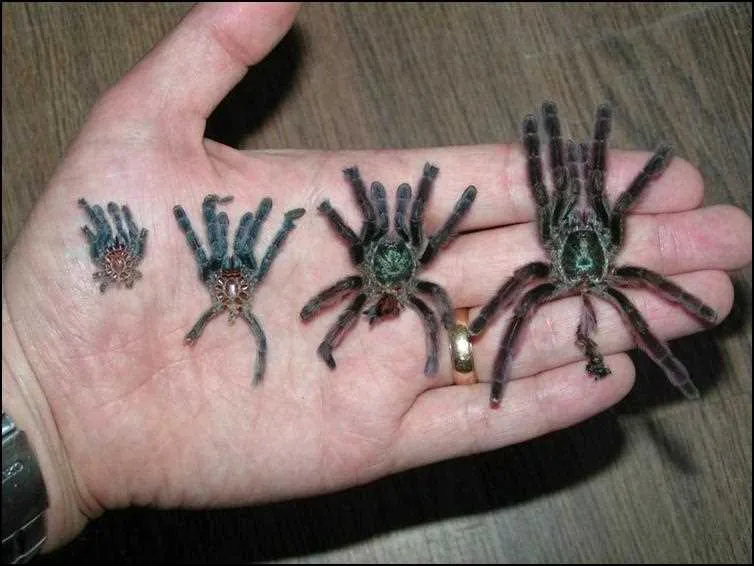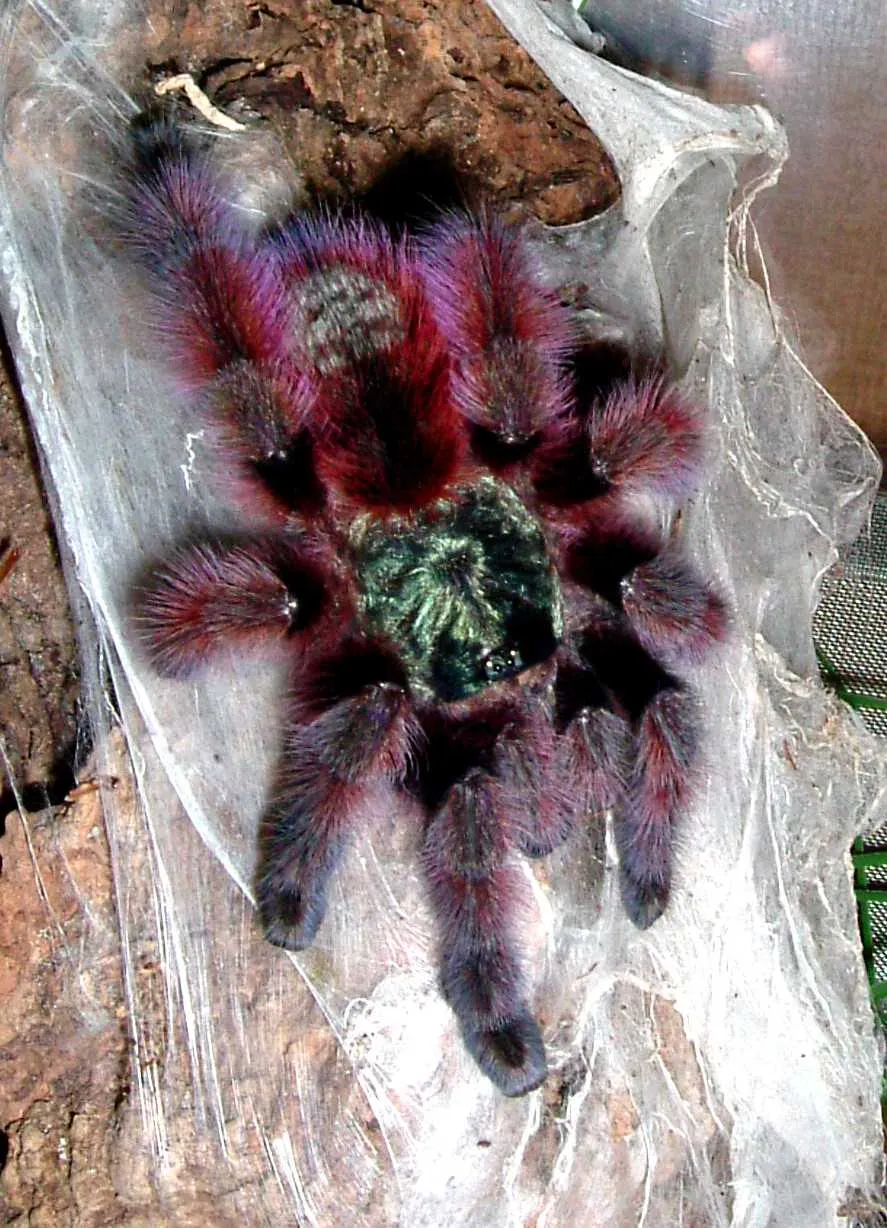Pinktoe Tarantula: Top 5 Male vs Female Differences
Pinktoe tarantulas (Avicularia avicularia) are fascinating creatures, and many enthusiasts are eager to distinguish between males and females. While both sexes exhibit the beautiful pink coloration on their feet that gives them their name, several key differences help determine their gender. Understanding these differences is crucial for anyone interested in breeding or simply observing these captivating arachnids. This guide will highlight the top 5 differences, making it easier to identify the sex of your pinktoe tarantula. This information will be beneficial for both novice and experienced keepers, providing insights into the unique characteristics of each gender.
Size and Overall Appearance
One of the most readily apparent differences is the overall size and build of the tarantulas. Generally, female pinktoe tarantulas tend to be larger and more robust than their male counterparts. This size difference is particularly noticeable as they mature. Females typically have a longer lifespan, allowing them to grow larger over time. Males, on the other hand, often appear more slender and less bulky. This is a crucial first clue when sexing your tarantula, especially if you have multiple specimens to compare. The size discrepancy becomes more pronounced as they reach adulthood, making it a reliable initial indicator.
Body Proportions

Closely related to size, body proportions also provide clues. Females often have a wider abdomen relative to their carapace (the top shell of the cephalothorax). This is because females carry eggs, and their bodies are designed to accommodate this. Males tend to have a smaller abdomen in proportion to their carapace. Observing these proportions is a helpful visual cue. If the abdomen appears significantly larger and rounder compared to the cephalothorax, it’s more likely a female. Conversely, a smaller abdomen in relation to the carapace could suggest a male pinktoe tarantula. Comparing the overall shape is a quick and easy way to start sexing your tarantula.
Pedipalps
The pedipalps, or the small appendages near the mouth, offer a more definitive way to determine sex. Mature male pinktoe tarantulas develop modified pedipalps called “boxing gloves” or “palpal bulbs” at the tips. These bulbs are used for mating and are easily distinguishable under magnification. Female pedipalps lack these specialized structures and appear more like typical legs. This difference is a reliable indicator, but it requires a close examination under magnification. Inspecting the pedipalps is a key step in determining the sex with certainty, especially for adult tarantulas.
Coloration
While both male and female pinktoe tarantulas share the vibrant pink foot pads, slight variations in overall coloration can sometimes be observed. The intensity of colors can differ, although this is not a reliable method for sexing. The colors can vary due to environmental factors, molting cycles, and individual genetics, making it unreliable. Observing these subtle color differences is not an accurate method, but it adds to the overall visual appeal. Color differences are not primary for differentiating male from female, and other techniques, such as examining the pedipalps, are much more useful.
Webbing and Lifestyle

While not a direct physical difference, the webbing and lifestyle of pinktoe tarantulas can provide indirect clues. Females typically build more elaborate and extensive webbing structures in their enclosures. This webbing serves as a home and safe haven. Males, especially after their final molt, may exhibit less complex webbing, as their primary focus shifts to finding a mate. The female’s webbing may look more extensive, and the males are often seen exploring the enclosures. These differences are not foolproof but add to the picture of what to expect from each sex.
Spermatheca and Epigyne
The most reliable method to sex a pinktoe tarantula is examining the molt. After a tarantula molts, the shed exoskeleton, or exuvia, can be examined for the presence of a spermatheca, a structure in females that stores sperm. The epigyne, a small plate on the underside of the abdomen, may also be visible on the molt. Males lack these structures. This is an incredibly precise method for sexing a tarantula. This examination needs a microscope to identify the sex with certainty.
Male Pinktoe Tarantula
Male pinktoe tarantulas often have a shorter lifespan than females. They are typically smaller and have a more slender build. Their primary goal is reproduction. Therefore, their behavior and appearance are largely influenced by this drive. The males are easily identifiable during maturity based on the presence of the boxing gloves on their pedipalps. These features are developed in their final molt.
Male Characteristics

The mature male pinktoe tarantula will show specific characteristics. These include a smaller size, less webbing, and the boxing glove pedipalps, used for mating. Male pinktoe tarantulas undergo a final molt, developing these features. Males also exhibit a more active lifestyle, particularly after their final molt, actively searching for a mate. They are less focused on building and maintaining their web habitat and more on moving around.
Mature Male Appearance
The mature male pinktoe tarantula will show very distinct changes. The most striking of these is the development of the palpal bulbs, which are modified pedipalps used for mating. He may also become more active, moving across the enclosure in search of a female. These males are typically ready for mating soon after their final molt. The boxing gloves on their pedipalps are the most obvious distinction. At this stage, the male’s primary goal is the mating process.
Life Cycle
The male pinktoe tarantula’s life cycle is geared towards reaching maturity quickly. Males molt several times until they reach sexual maturity. After their final molt, the male’s primary objective is to find a mate. The male will have a shorter lifespan compared to a female and does not live beyond the mating process. The life cycle of a male is a race to reproduce, driven by hormonal changes.
Female Pinktoe Tarantula

Female pinktoe tarantulas exhibit different characteristics. Females tend to be larger, with a longer lifespan. Their primary focus is on survival, growth, and reproduction. Female pinktoe tarantulas invest time in building extensive web habitats. The females are typically less active than the males. The focus is always on survival, growth, and reproduction.
Female Characteristics
Female pinktoe tarantulas are larger, with a more robust build. Their pedipalps do not have the boxing gloves. Females construct complex webbing structures. These are the core elements that characterize female pinktoe tarantulas. Female behaviors are more focused on establishing and maintaining their territory, as well as finding food. The main difference is their body size and the absence of the palpal bulbs.
Mature Female Appearance
As a mature female, the pinktoe tarantula will grow much larger than the male. Female coloration often intensifies, and her abdomen will swell. The female will focus on maintaining her environment. They do not undergo a final molt and are capable of producing eggs. The female’s primary goal is the production of viable eggs. The mature female will display a sturdy body with a wider abdomen. These are the typical features of the female.
Lifespan and Breeding

Female pinktoe tarantulas have a longer lifespan than males, often living for 10-15 years or even longer. During this time, they can reproduce multiple times, producing egg sacs. Breeding involves specific requirements. The female’s health and environment are important for successful reproduction. The long lifespan enables females to produce multiple egg sacs, contributing to population sustainability. The mating process requires carefully managed environmental conditions.
Conclusion
Distinguishing between male and female pinktoe tarantulas requires careful observation of several key features. Size and proportions, pedipalps, and behavior provide important clues. Determining the sex of your pinktoe tarantula can be fascinating. This guide has highlighted the main differences. With practice, you can easily differentiate between males and females. Remember to use multiple methods to ensure accuracy, and consult with experienced keepers. Understanding these differences enhances the enjoyment of keeping and breeding pinktoe tarantulas.
